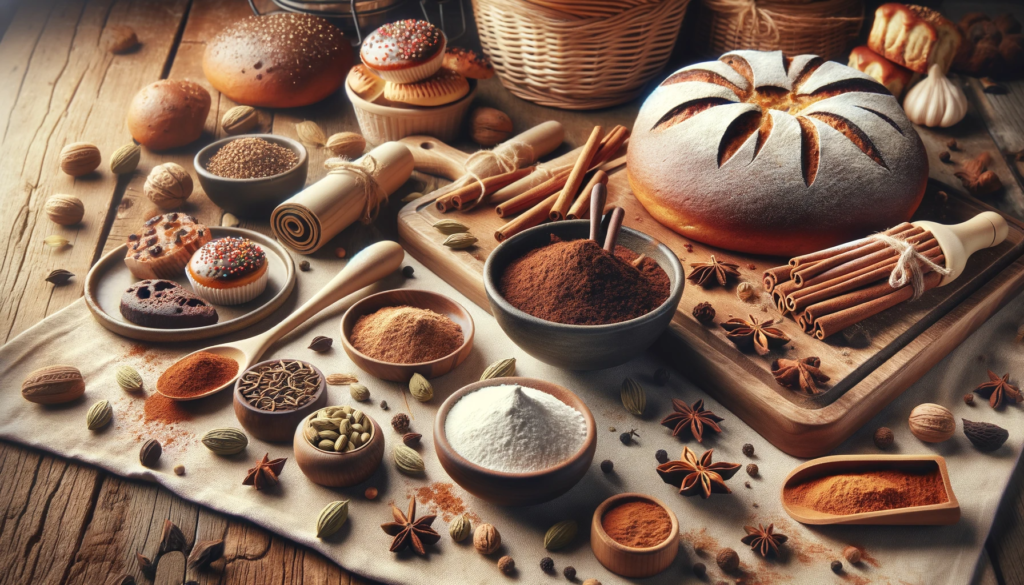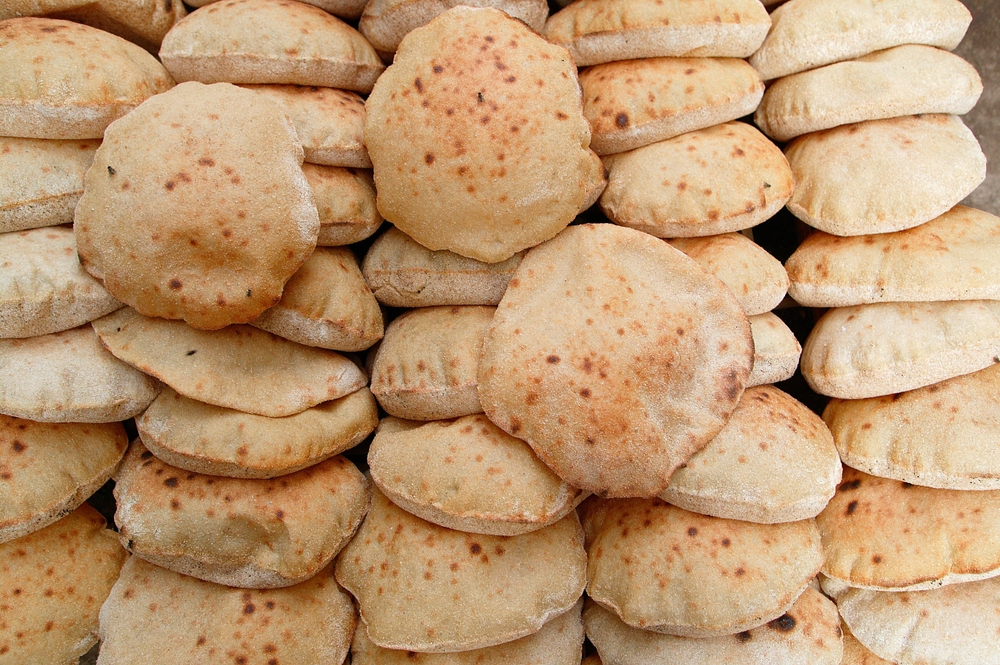Embark on a culinary adventure where the aromatic allure of African spices transforms traditional baking into an exotic journey of flavors. African spices, known for their robust profiles, are no longer confined to the boundaries of savory cuisine. The emergence of these spices in baked goods marks the union between the comforting sweetness of desserts and the zesty kick of heat. This article explores the spellbinding relationship between sweet and spicy in baking, unleashing the untapped potential of African spices to create a fascinating gastronomic experience.
Introduction to Using African Spices in Baking
The Exciting Fusion of Sweet and Spicy Flavors
African spices carry a boldness that can elevate the ordinary to the extraordinary. The thrilling fusion of sweet and spicy opens doors to a creative and sensory world within baking. By incorporating these aromatic gems, bakers can deliver heat and depth alongside the comforting sweetness of desserts. Understanding the delicate balance between these two sensory experiences is pivotal in crafting baked goods that are both memorable and harmonious.
Popular African Spices for Baked Goods
Exploring Spices like Berbere, Harissa, and Ras el Hanout in Baking
Regarding African spices, Berbere, Harissa, and Ras el Hanout stand out as distinct flavors that can introduce complexity and warmth to baked treats. Berbere brings a fiery complexity to sweet creations, while Harissa offers a smoky dimension. Ras el Hanout, often a blend of more than ten spices, delivers an intricate tapestry of flavors unparalleled by other spice mixtures.
The Unique Flavor Profiles of African Spices
Each African spice blend possesses a unique flavor profile that can enchant and enhance various baked goods. African spices are not homogeneous; their flavor profiles range from floral and citrusy notes to earthy undertones, adding distinctive character and richness to sweet bakes. Understanding these profiles aids in tailoring them to complement a variety of ingredients in innovative and appealing ways.

African Spice-Infused Baking Recipes
Berbere-Spiced Chocolate Cake
Infuse the classic chocolate cake with the fiery flavors of Berbere for an unforgettable dessert. This spice imparts a piquant punch and intensifies the rich chocolatey notes, resulting in a cake that delights with every spicy-sweet bite.
Harissa-Flavored Fruit Tarts
Enliven fruit tarts with the smoky and slightly spicy kick of Harissa. This Tunisian chili paste blend can be tempered with sugar to create a glaze that accentuates the fruit’s natural sweetness and introduces a subtle heat, making every tart a spectacular flavor encounter.
Ras el Hanout Infused Shortbread Cookies
Shortbread cookies are taken to new heights with the addition of Ras el Hanout. This aromatic spice blend infuses the buttery cookies with hints of cardamom, clove, and other spices, leading to a delightful surprise in this classic treat.
Suya Spice Mixed Nuts and Seeds Brittle
Introduce a nutty brittle to your repertoire featuring Suya spice mix, lending a West African twist to a traditional candy. The earthy and nutty flavors of Suya provide a perfect counterpoint to the sweetness of the caramelized sugar, creating a textural and flavorful delight.
Cardamom and Cinnamon Spiced Breads
Cardamom and cinnamon, often found in North African and Middle Eastern cuisines, can add warmth and spice to various breads. These spices mingle seamlessly with yeasty flavors, offering a comforting and aromatic uplift brightening your baking repertoire.

Tips for Balancing Sweet and Spicy in Baking
Techniques for Incorporating Spices into Baked Goods
Using spices in baking requires a dose of culinary finesse. To blend them seamlessly into recipes, consider when and how they are added. Toasting spices can heighten their flavors, and grinding them just before use ensures maximal flavor. Infusing spices in liquids or folding them into dry ingredients can distribute their flavors evenly throughout the baked goods.
Adjusting Spice Levels for Desserts
When it comes to spicing desserts, understanding your audience’s palate is key. Start with a conservative amount of spice and work your way up, tasting as you go. Pair and layer spices thoughtfully to ensure that no single flavor overpowers another, creating a balanced and enjoyable eating experience.
The Benefits of Incorporating Spices in Baking
Nutritional Advantages of Using Natural Spices
Apart from their delightful flavors, spices boast a range of health benefits. They are rich with antioxidants, possess anti-inflammatory properties, and can aid digestion. Integrating spices into baking not only enhances taste but also adds nutritional value to indulgences.
Enhancing Flavor and Aroma in Baked Goods
The inclusion of spices in baked goods contributes to a complexity that artificial flavorings cannot replicate. Spices can impart an aroma that entices the senses, beckoning even before the first bite. This enhancement extends the sensory experience from mere taste to an engaging dance with fragrance and flavor, making each baked creation profoundly memorable.
Pairing African Spice-Infused Baked Treats with Beverages
Drink Suggestions to Complement Spiced Desserts
Pairing spiced desserts with the right beverage can amplify their exotic flavors. Consider rich, robust coffees or spicy teas like chai to contrast the warmth of the spices. For an evening treat, a sweet dessert wine or a spirit with its own spicy notes can be a match made in heaven for African spice-infused baked goods.

Exploring Modern Trends in Spiced Baking
The Growing Popularity of Spiced Baked Goods in Contemporary Cuisine
As global culinary boundaries blur, the modern baker’s palette expands, embracing the bold and unexpected. Spiced baking has ascended in popularity, driven by the thriving interest in global cuisine and the quest for innovative flavors — ushering in a delightful era of sweet and spicy symphony within the baking sphere.
FAQs on Baking with African Spices
How Do I Determine the Right Amount of Spice for a Recipe?
The correct amount of spice can vary depending on personal taste and the specific spice’s potency. Start with a small amount, such as a quarter teaspoon for a batch of cookies or cake, and adjust based on taste. Remember that spices like Berbere and Harissa are stronger and may require a lighter touch than more mild spices.
What’s the Best Way to Ensure Even Distribution of Spices in My Baked Goods?
To ensure spices are evenly distributed, thoroughly mix them with your dry ingredients before combining with wet components. For liquid-based spices or pastes, such as Harissa, mix them well with the batter or dough to prevent clumping. Sieving spice blends with flour is another effective technique for uniformity.
How Should I Store African Spices to Keep Them Fresh?
Spices should be stored in airtight containers away from heat, light, and moisture to preserve their flavor and prevent spoilage. Glass jars with tight-fitting lids in a pantry or cupboard are ideal. Avoid storing spices near the stove or in the refrigerator where temperature fluctuations can degrade their quality.
Can I Substitute One African Spice for Another in a Recipe?
Substituting one African spice for another can be done, but it will significantly change the flavor profile of the dish. If you’re lacking a specific blend like Ras el Hanout, consider which dominant spices in the mix you can use as substitutes. However, for an authentic taste, it’s best to use the spice specified in the recipe.
Is It Necessary to Toast African Spices Before Baking?
Toasting spices can intensify their flavors but isn’t always necessary, especially if they’re being baked into a dish where they will have prolonged exposure to heat. For recipes where spices are a finishing touch, or in spice mixes like Berbere, toasting beforehand can enhance their profiles.
Are There Any Health Considerations When Using Spices in Baking?
Most spices used in moderation are not only safe but beneficial for health because of their antioxidant and anti-inflammatory properties. However, sensitive individuals should be cautious with spicy blends like Berbere, which could trigger digestive discomfort if overused.
